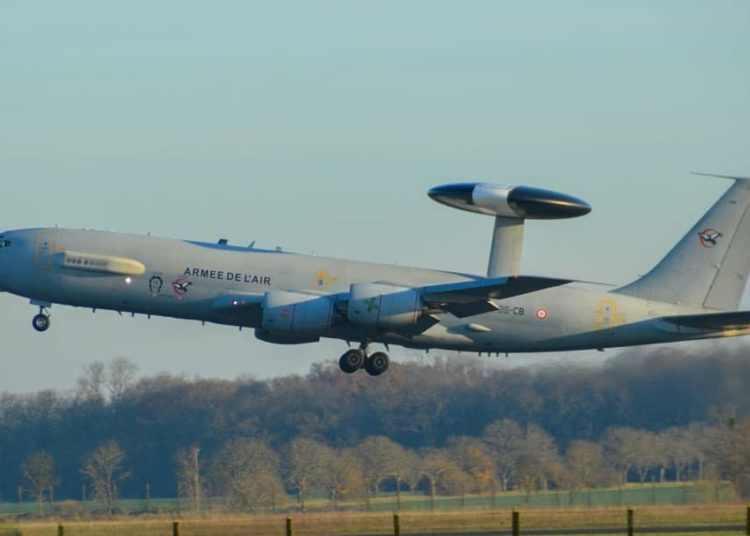Nordic Monitor
Turkey refused to allow E-3D and E-3F AWACS surveillance aircraft from NATO allies the United Kingdom and France to overfly its airspace in 2015, confidential memos obtained by Nordic Monitor have confirmed.
According to military documents issued by the Plans and Principles Directorate of the Turkish General Staff in December 2015, the UK had submitted an overflight request for its military surveillance E-3D aircraft to the Turkish General Staff in 2015, and, in parallel, another overflight permit was sought by the French Embassy in Ankara for its E-3F aircraft to conduct an observation flight over Turkish territory.
However, Turkish military authorities rejected both overflight requests due to the Electronic Support Measures (Elektronik Destek Tedbirleri, EDT) of these planes, the memos stated. The document also claimed that E-3D/F AWACS (Airborne Warning and Control System) aircraft were programmed to collect data threatening Turkey’s national interests.
The E-3D/F AWACS aircraft, which is based on a Boeing 707, carries out early warning duties and surveillance and allows commanders to plan air campaigns. Boeing delivered the fourth Peace Eagle Airborne Early Warning & Control (AEW&C) aircraft to the Turkish Air Forces in 2015, completing the Turkish AEW&C fleet and enhancing Turkey’s airspace surveillance capabilities.
The classified military document that shows Turkey denied overflight permission for France and the UK:
The Turkish General Staff informed the French defense attaché on March 2, 2015 and the UK military attaché on March 10, 2015 of its decision on overflight permit requests, the memos underlined, adding that each attaché was asked to approve demands made by the Turkish side by signing a separate Letter of Understanding (LoU) in exchange for Turkey’s permission for the E-3D/F AWACS aircraft to overfly its airspace.
In that regard, the Turkish military wanted to deploy a pilot/radar prevention controller and electronic intelligence operators in the E-3D/F AWACS during their flight over Turkish airspace; to be provided a copy of the surveillance data gathered in Turkish airspace; and to carry out observation flights over UK and French territory. But France and the UK rejected Turkey’s demands and withdrew their request for an overflight permit.

Turkey, France and the UK are parties to the Treaty on Open Skies. The treaty, which has 34 party states, establishes the regime for the conduct of short-notice, unarmed aerial surveillance by party states in an area stretching from Vancouver to Vladivostok. The treaty gives each state the right to conduct and the obligation to accept observation flights over their territory.
Under the open skies regime, each country has the right to conduct a certain number of unhindered observation flights, agreed annually, in the airspace of the other party states. According to the treaty, sensors for photography, radar and infrared imagery may be used to observe from the air.

According to the documents, Turkey also opposed French and Greek arguments on the implementation of national regulations during NATO exercises. France and Greece claimed that national regulations shall be implemented in the event of a conflict stemming from inconsistency between the NATO Air and Missile Defense System Plan (SUPLAN 24600D) and national laws, and France insisted that national laws regulating its airspace should have been applied to similar cases during the NATO Ramstein Aspect 14 military exercise held in September 2014.
The military documents also revealed Turkey’s strategy to limit “the participation of non-NATO countries in the NATO Missile Firing Installation (NAMFI) activities as observer states in accordance with the NATO 2012 Chicago Summit decisions and Military Committee Memoranda (MCM)-0086-2011 document.” However, Germany, Greece and the Netherlands objected to Turkey’s arguments and underlined that (MCM)-0086-2011 regulates missile firing operations by non-NATO states and that these countries are allowed to attend NAMFI activities as observers without NATO Military Committee (MC) approval.
According to its web page, NAMFI is a multinational training installation that was established in Crete with the Multilateral Agreement (MA) signed on June 11, 1964. Germany, Greece and the Netherlands, which are called user nations, are still party to the agreement, and they support and use NAMFI on a permanent basis. The design and construction of NAMFI was carried out by NATO agencies. The NATO MC has the final word on the approval procedure for a missile firing activity at NAMFI by a non-NATO country.












